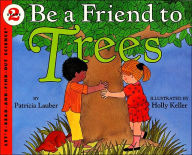Melvin Berger is the author of many classic LRFOs, including Germs Make Me Sick!, Oil Spills! and Why I Cough, Sneeze, Shiver, Hiccup, and Yawn, as well as other nonfiction on the Harper backlist. He lives in East Hampton, NY.
Carolyn Croll is the distinguished illustrator of many books for children, including the I Can Read Books The Big balloon race by Eleanor Coerr and Clara and the Bookwagon by Nancy Smiler Levinson. She lives in Philadelphia, PA.

















